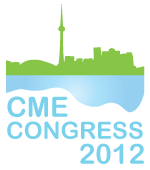Catherine Hy Yu1,2; Henry Halapy3; Rene Wong1,4
1 Keenan Research Centre, Li Ka Shing Knowledge Institute of St. Michael’s Hospital, St. Michael’s Hospital, Toronto, Ontario. 2 Department of Medicine, Faculty of Medicine, University of Toronto. 3 St. Michaels’ Hospital, Toronto, Ontario. 4 Toronto General Hospital, University of Toronto.
Synopsis
Little is known regarding how interprofessional education can foster interprofessional collaborative practice. We conducted individual interviews and used narrative analytic techniques to investigate factors affecting interprofessional learning and collaboration. Perception of team member’s competence and being “on the same wavelength” contributed to trust, and were cited as crucial to enabling collaboration.
Abstract
Background: While interprofessional collaboration can improve health outcomes, studies in diabetes care have been lacking. Little is known regarding how interprofessional education can foster interprofessional collaborative practice. Our objective was to develop, implement and evaluate a 2-year, multifaceted interprofessional outreach program on diabetes for interprofessional Family Health Teams (FHT).
Summary of work: We used Graham’s “Knowledge to Action” framework to design our intervention and study. We used mixed-methods to investigate factors affecting interprofessional learning and collaboration, and the impact of our intervention on interprofessional collaboration. Individual interviews were conducted; all interviews were audiotaped and field notes were kept of all sessions. Narrative analytic techniques were employed.
Summary of results: We piloted this program on 2 FHTs. Qualitative analysis was done mid-program on 8 interviews (3 physicians, 2 nurses, 1 dietician, 1 social worker and 1 pharmacist). Five themes impacting a clinician’s engagement with an interprofessional approach to care were identified: 1) trust in other health care providers; 2) perceptions of team engagement; 3) segregation of responsibilities; 4) power relationships; and 5) finances.
Conclusion: Perception of team member’s competence and being “on the same wavelength” contributed to trust, and were cited as crucial to enabling collaboration. While revision of professional roles was also highlighted, concerns regarding professional autonomy and financial impact were identified.
Declaration
No disclosures to declare





